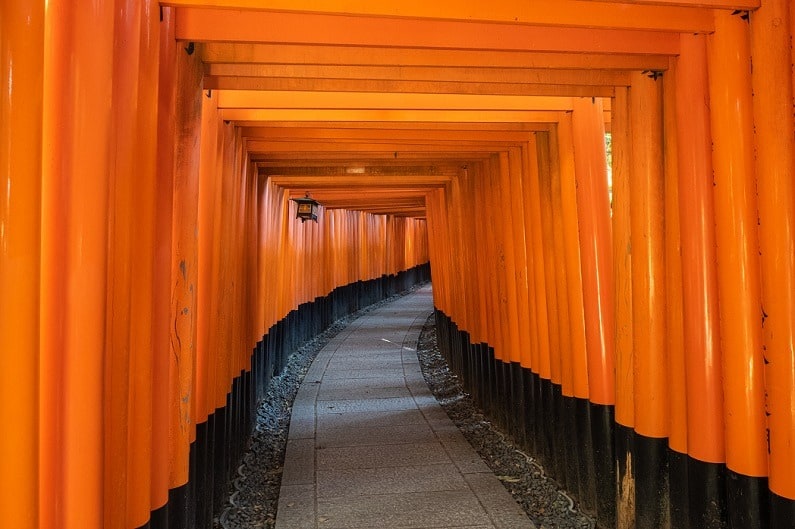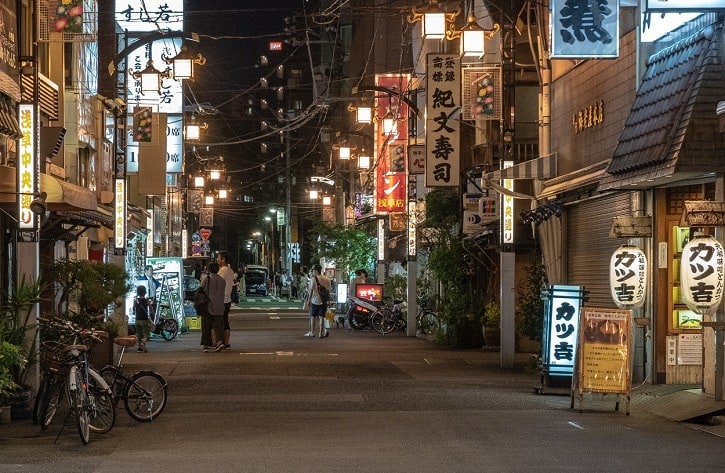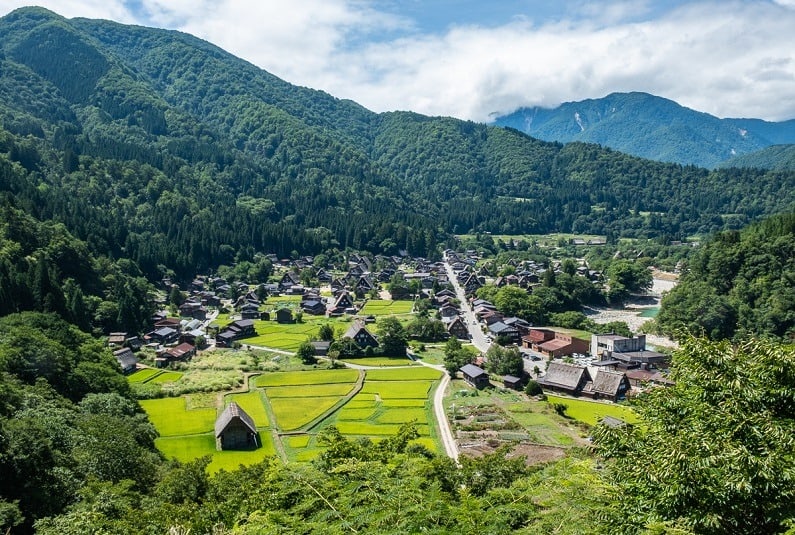Solo Travel in Japan: the Good, the Bad, and the Ugly
For the flashpacker traveling solo, safety, comfort, ease of travel, and affordability are essential features in a destination. Let’s see how Japan stacks up to our criteria and how it compares to other destinations in Asia. Here is the low down on what it’s really like to travel solo in Japan along with some tips on how to overcome the bad and the ugly.
Disclosure: This post may contain affiliate links. As an Amazon Associate and a Bookshop.org Associate, I earn from qualifying purchases. Please see this website's Disclosure for more info.
The Good Side of Traveling Solo in Japan
There are many reasons why Japan is a great place for solo travelers.
1. For women, Japan is pretty safe
I “felt” safe walking alone at night in Japan. I was never harassed. I never heard or received any cat calls or rude looks or remarks from men.
I stayed in Asakusa and walked back to my hotel from the subway station a few times after 10:00 pm. It was a fifteen-minute walk through streets of closed shops, a few diners still eating dinner, and a few stragglers walking home. I never once felt uncomfortable.
When I was hanging out in Shibuya, Shinjuku, and Akihabara, there were so many people around that I always felt safe. The subways were still packed with people.
Chikan – Sexual Harassment on Trains
The one thing I have heard that female travelers might need to watch out for is taking the subway during early morning rush hour. Chikan is the Japanese word for both the unwanted act of touching someone without their consent and the person who does this act. According to surveys, about 2/3 Japanese women said they had been touched while riding crowded trains. This led to the female-only wagons in certain cities like Tokyo and Osaka. While traveling in Japan, I did not experience chikan nor did I notice these female-only wagons.
2. Hostels are doable even for those who don’t like hostels
Japan is an expensive country, and for solo travelers, finding affordable hotels there can be more difficult than in other parts of Asia.
You can probably get a room at a business hotel for US$65 or US$75 a night but usually closer to $100 a night. A boutique hotel is going to cost you a lot more.
Airbnb has also not really taken off in Japan like it has in other countries.
The good thing is that if you need to stay in hostels, they’re pretty nice. The picture above is of the Share Hotel Hatchi in Kanazawa.
There are lots of boutique-style hostels that offer a bit of privacy like in the pictures above.
Hostels cost around US$35 a night but can range from $25 to $50. You often get a curtain over your bed, a bed-side lamp, a cupboard with lock, and slippers.
The showers and toilets are very clean and modern. For someone who doesn’t like hostels anymore, I found them to be acceptable and did not mind staying in them at times during my solo travels through Japan. In fact, I felt just as comfortable in dorms as I did in some hotels.
Another option is to do capsule hotels. Capsule hotels come in a variety of styles. The one I stayed in gave each traveler his or her own tiny room with a curtain over the doorway. The capsule hotel was also divided into female and male sections with a secure entrance to each section.
3. Japan is a great place to eat in restaurants alone
For eating, Japan is a solo traveler’s dream country. In many Japanese restaurants, customers have the option of sitting at a counter rather than a table. This seating arrangement is ideal for solo travelers. You don’t feel so self-conscious sitting alone at a counter as you would at a table.
And unlike people in other countries I’ve visited, I saw Japanese people eating alone a lot, so you shouldn’t feel out of place doing so as well.
Because the Japanese tend to eat small portions, you’re not going to end up wasting a lot of food if you can’t finish it all. This happened to me in Myanmar.
Before my trip, I was a bit anxious about ordering and eating in Japanese restaurants. I assumed that there were a lot of rules and rituals that I wasn’t aware of, and due to my ignorance of them, I’d make a fool out of myself. My assumptions were correct and there are lots of rules of etiquette on how to eat. My suggestion is to watch some youtube videos on how to properly eat sushi and cold soba and udon noodles and how to order ramen from a machine.
Here’s a great video on how to eat soba noodles:
Also, knowing how to eat sushi will help solo travelers not feel so stupid. On the last day of my trip, I found out that I had been eating sushi wrong the whole time when the sushi chef pointed out my mistake.
You can find out how to order ramen from a machine in my Tokyo itinerary article.
4. It can be easy to get around Japan by yourself
The transportation system in Japan is both good and bad for solo travelers. I’ll start with the positive and below you can read about the negative in the con’s section.
Japan trains and buses between cities are clean, comfortable, and fast. Japan is the most organized and efficient country I’ve been to.
What’s more, announcements are in English, so you generally know when to get off.
Also, you can download two great Apps: Hyperdia and Navitime. Hyperdia gives you train schedules and Navitime give you city public transportation information.
Japanese trains also connect to many destinations and if there’s no train station in a town, at least there’s a bus station. Solo travelers don’t need to worry about having to rent a car then.
Solo travelers also don’t need to worry about buying train tickets. You can also get a Japan Rail pass before you leave your country. This allows you to hop on and off trains anytime you want without buying a ticket.
You also have the option of reserving a seat free of charge. Just go to the JR Rail office at train stations (look for a green sign) and get a seat reservation. These offices are not hard to miss. There was always someone who spoke English there when I went.
I bought my JR Pass from Japan Experience and I was very happy with their service. I do not have an affiliate relationship with them.
5. Japanese people are wonderful!
For solo travelers, the Japanese people’s kindness and eagerness to help makes traveling in the country enjoyable and easy. I need all 10 fingers and 10 toes to be able to count the number of times the people in Japan helped me find my way. I’ve even had people walk out of their way going in the opposite direction or from the other side of town to help me find my way.
Most of the time, I did not feel that Japanese people disliked foreigners. I only got an odd feeling once when I stayed at an expensive ryokan in Hakone, Fukuzumiro. This could have been because I showed up 15 minutes before the 3:00 pm check-in, which I realized later that arriving early is not acceptable.
6. There’s very little crime
You don’t need to worry about pickpockets or muggings in Japan. I’m sure these happen, but it’s definitely nowhere near as common as in Cambodia, Lima, San Francisco, or Rome. You still want to watch your stuff, but you don’t need to be as vigilant about it as you would in other countries.
7. If you get injured or sick, medical care is inexpensive and accessible
If you get hurt and need a hospital, you’re in luck. Medical care is inexpensive and hospitals are efficient and clean. In addition, there should be an English interpreter on staff.
How do I know this? Well, a blister became infected on my left food and I had to go to the hospital. Although the doctor and nurses didn’t speak English, the hospital had an interpreter that helped me through the process of checking in and seeing the doctor. I was treated kindly and respectfully.
Make sure to go to a hospital and not a clinic, though, as you will likely be turned away like I was from a clinic.
8. Lots of information about Japan in English
One of the many things I loved about traveling in Japan was the incredible amount of travel information available for the foreign tourist. I highly recommend checking out the official tourism website for each city that you are going to. They have lots of information written in English.
The Bad Side of Traveling Solo in Japan
There are a few downsides to traveling solo in Japan.
1. Some ryokans don’t accept solo travelers
I originally wanted to stay overnight in Shirakawa-go. To book accommodations there, you need to visit the Japanese Guesthouses website . Unfortunately, they told me that ryokans (it’s the only type of accommodation in the city) have had too many problems with solo travelers, so they won’t accept any now. It might have been possible to stay in a Minshuku, a Japanese style bed and breakfast, in another city. but I didn’t check it out. I think this no solo traveler policy is the same for other small towns in Japan.
2. Traveling Solo in Japan can be lonely
Because some of the hostels give you so much privacy, you’re less likely to interact with other travelers.
Also, Japan doesn’t get a lot of backpacker-type travelers perhaps due to its perception as an expensive place to travel in. As a result, it can get lonely traveling in Japan. There were times when I didn’t speak to anyone other than hotel or hostel staff for several days in a row.
On the other hand, the solo travelers that I did meet were friendly and open. It was easy to make quick friendships, albeit for just one night, with other travelers.
3. Communication isn’t always easy
The Japanese are known for having difficulty with communicating in English. Unlike a lot of countries that teach English to students in primary school, Japanese children don’t learn English until high school.
I encountered lots of hotel staff whose English was limited. Sometimes my limited Japanese and their limited English caused miscommunication or just not communication at all.
People should learn some Japanese beforehand or get a pocket translator.
4. Hotel prices are expensive
As mentioned above, hotels are more expensive than in Southeast Asia. Solo travelers in Japan are going to spend a minimum of $65 or $75 a night at a hotel.
It wasn’t affordable for me to stay in hotels for my whole trip in Japan, so I stayed in hotels half of the time and hostel dorms the other half.
You can read the article on how to afford hotels while traveling solo by clicking here.
5. Getting around can be challenging
I mentioned above that transportation system is mixed. Here is the bad part of the system.
Tokyo is going to be your major obstacle to getting around. The system is so complicated and so enormous that you need a PhD to understand how the it works.
First, street signs are usually nonexistent making using a paper map to get around difficult. You’ll need to have Google maps to navigate the streets.
The subway stations are also difficult to navigate. I can’t tell you how many times I became paralyzed with indecision because I couldn’t figure out which exit to take to get to my hotel. The worst station is Shinjuku, which is a cavernous, endless hell hole.
6. Japan can be hard on solo travelers with mobility issues
Another downside of solo travel in Japan pertains to those who’ve got trouble walking or taking stairs. It’s going to be hard getting around in the big cities and at train stations.
I’ve got a really messed up painful right knee (meniscus tear, arthritis, and stress fracture). I also have planter fasciitis on my left foot and bunions on both feet. For me, walking and standing for a long time can be excruciatingly painful. I found traveling in Japan to be harder on me physically than any other country I’ve been to.
First of all, you’ll be doing lots of walking going from one site to the next. You can’t rely on taxis or Uber to get you from point A to point B. They’re too expensive and they’re just not plentiful like in other Asian countries. You need to then take the subway or bus, which requires extra walking. What’s more, you sometimes need to walk a lot when transferring from one subway line to the next.
The second major obstacle to those with problems walking is the stairs. Because many subway stations are deep underground, you need to walk up and down long flights of stairs. Escalators are rare. Sometimes there are elevators, but they’re not easy to find.
To make matters worse, as a solo traveler in Japan, I needed to carry lots of stuff around: water bottle, camera, camera gear, a 191-page Lonely Planet, phone, battery charger, pocket wifi, Kindle, wallet, suntan lotion, journal, a small first-aid kit, extra pair of glasses in case my main pair break, etc. If there had been two of us traveling together, we could have split the items between the two of us. As a solo traveler, I needed to carry everything. If you’ve got knee or foot problems, then you know that carrying that extra weight adds to the pain.
What do you do? It’s essential for those with pain while walking to go slowly. Don’t rush your trip trying to see too many things in one day or do too many stops in one trip.
Look for elevators at subway stations and in museums.
Pack light. Since hotels and hostels in Japan have self-serving washers and dryers, you don’t need to take so many clothes.
Don’t travel in August when it’s unbearably hot. If you can, do the shoulder season like May and September.
Final Thoughts
That’s it. Don’t let the downsides of traveling solo in Japan dissuade you from going. While it’s going to be more expensive than other Asian countries, due to its efficiency, it’s also going to be easier to get around. Offset your expenses by staying at hostels for part of your trip. This will help balance out your costs.
Overall, it’s a wonderful country with lots of great places to explore, food to eat, and people to meet.
Have you traveled solo in Japan? What was your experience like? Are you planning on traveling to Japan? What are some of your worries? Leave a comment or a question below. Please share on social media.





















Japan is not as safe place as people believe.
Japan is not adorable place either.
I had bad impression about Japan after my visit to Japan.
First, Japan is very polluted country.
Air is so polluted that you will have throat-ache.
Nowadays, air is getting more and more polluted so you need to wear masks.
Second, things are very expensive in Japan.
Foods, accomodation, transporation etc… are so high.
One plate of sushi (10 pcs) was $45 which you can have $10~15 in the US.
Third, people are friendly.
But they don’t help you if you are lost.
Hi Dave! I’m sorry about your experience in Japan. I think every trip is personal. Some people might like a place and others won’t.